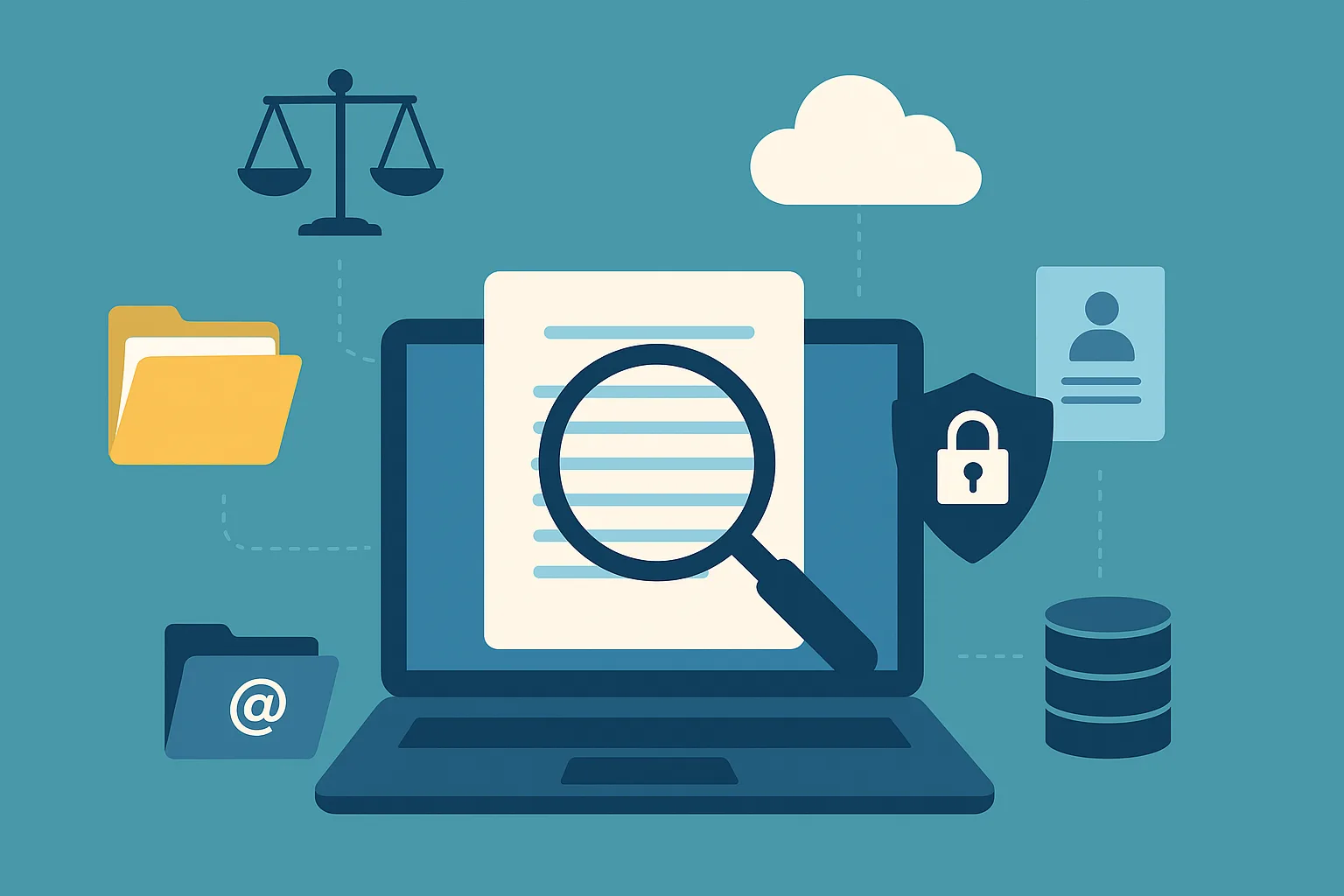In today’s digital landscape, the volume of electronically stored information (ESI) continues to grow at an exponential rate. As organizations increasingly rely on digital communication, documents, and data storage, the legal process has adapted to include the retrieval and analysis of electronic evidence—a process known as eDiscovery.
Whether you’re a systems administrator, legal professional, or IT manager, understanding the basics of eDiscovery and its step-by-step process is critical in ensuring compliance and efficiency in legal investigations.
What is eDiscovery?
eDiscovery, short for electronic discovery, is the process by which electronic data is identified, collected, preserved, reviewed, and exchanged during legal proceedings. This process typically occurs in response to litigation, investigations, audits, or Freedom of Information Act (FOIA) requests.
Unlike traditional discovery, which involves paper documents and physical evidence, eDiscovery deals with vast and complex data sources, including emails, chat logs, documents, metadata, databases, and more.
Why is eDiscovery Important?
Electronic data can be pivotal in legal disputes, especially since it often contains timelines, authorship, edits, and even deleted content that can be recovered. Proper handling of this data is not just beneficial—it’s legally required. Mishandling ESI can lead to legal penalties, sanctions, or case dismissals.
Key Steps in the eDiscovery Process
The eDiscovery process is typically broken down into several critical steps. These ensure that the data is handled systematically and legally throughout the discovery phase.
1. Information Governance
Before eDiscovery even begins, organizations should have policies in place to manage their data. This includes classifying data types, setting retention schedules, and implementing access controls. Effective governance simplifies the eDiscovery process when it arises.
2. Identification
The first active step in eDiscovery is identifying the sources of potentially relevant information. This includes locating custodians (people who control the data), devices, servers, cloud storage, and applications where data might be stored.
3. Preservation
Once relevant data is identified, it must be preserved to avoid loss or tampering. Legal holds are often placed on data, instructing custodians not to delete or modify specific information. Preserving metadata is also critical, as it provides context for the data.
4. Collection
In this phase, the preserved data is collected in a forensically sound manner. This often involves creating exact digital copies of files to maintain authenticity and allow for proper analysis.
5. Processing
The collected data is then processed to filter out irrelevant, duplicate, or corrupted files. This step can involve indexing, deduplication, and formatting the data for review. Processing helps reduce the overall volume of data to be analyzed.
6. Review
Legal teams review the filtered data to determine what is relevant, what is privileged, and what should be redacted. This stage is crucial for compliance and protecting sensitive or confidential information.
7. Analysis
This step involves deeper examination of the data to uncover facts, timelines, relationships, or patterns that are relevant to the case. Tools using artificial intelligence and machine learning are increasingly used here to expedite insights.
8. Production
Relevant data is organized and shared with opposing parties in an agreed-upon format. This ensures transparency and allows for fair evaluation of the evidence.
9. Presentation
In court or during legal proceedings, relevant findings from the eDiscovery process are presented. This may include visual exhibits, timelines, or reconstructions based on the data retrieved.
Challenges in eDiscovery
- Data Volume: The sheer amount of data generated daily can make it difficult to isolate relevant information.
- Data Formats: Data can come in many forms and from various platforms (email, chat apps, cloud services).
- Privacy & Compliance: Ensuring data is handled in compliance with regulations such as GDPR or HIPAA.
- Cost: eDiscovery can be resource-intensive, requiring specialized tools and personnel.
Conclusion
Understanding the eDiscovery process steps is essential for organizations of all sizes. Proper preparation, governance, and use of the right tools can not only make the process more efficient but also help avoid costly legal missteps. As the digital world evolves, so too must the strategies we use to navigate its legal implications.


